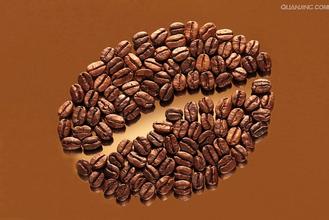Coffee or coffee beans, which kind of coffee beans are more suitable for hand brewing?
The origin of coffee plant can be traced back to millions of years ago. In fact, the true age when it was discovered is unknown. Only coffee is said to be Ethiopian.
A shepherd named Kaldi discovered coffee when he noticed that his sheep had become very lively after accidentally eating the fruit of a plant. All historians seem to agree that coffee was born in the Kaffa region of Ethiopia. However, the Arabs were the first to cultivate and consume coffee systematically, and the name coffee is believed to derive from the Arabic word Qahwah, meaning plant drink.
Coffee for drinking is said to have begun in the early eleventh century, and records of this can be found in ancient Arabic texts. Before that, the Arab region was to dry coffee beans and then boil them as stomach medicine to drink, but later learned that coffee also has a refreshing effect, coupled with the strict Islamic law, prohibiting believers from drinking alcohol, believers will use roasted coffee juice, as a substitute for alcohol to drink, it is said that the local people know how to roast beans to use, it is after the thirteenth century.
In the 16th century, coffee was gradually introduced into Europe in the name of "Arabic wine" via Venice and Marseille Port. The European coffee drinking custom was gradually spread by Venetian merchants in Italy in the 17th century, and Europe appeared in Venice.
The first coffee shop-Bottegadel Caffe. Over the past four hundred years, coffee drinking habits have not only spread from the West to the East, but have even become an unstoppable trend.
Coffee was planted in large numbers by Arabs in the twelfth and third centuries, and the world's first coffee house was born in Damascus (1530) in the Middle East in the sixteenth century. Within a few short years, more than two hundred cities throughout the empire, from ancient Constantinople to the Caucasus, from the Persian Gulf to Budapest, had varying numbers of coffee shops, and the roads that connected them through the desert wilderness were filled with mobile coffee tents to serve the endless stream of merchants and armies. Coffee also spread to Europe in the same century, when coffee was brought to Western countries along with the Turks to Austria, but did not expect to capture the hearts of Europeans very quickly. It is recorded that a packet of samples sent from Venice to Holland in 1596 was the first coffee beans seen by Europeans north of the Alps. Legend has it that coffee was rare in Western Europe at the time, and there were jokes about German housewives making coffee with chicken soup. According to scholars, in the prosperous import and export trade of seasoning raw materials at the end of the sixteenth century, many coffee beans from the East began to enter Europe through Venice, which was developed in trade.
But the first coffee shop in Europe was not opened until 1683 in Vienna, Austria, by a Polish. Traders who knew the languages of Eastern Europe and Turkey, led by the brilliant Armenian merchant Johannes Diodato, not only acted as interpreters and guides for Austria during the war, but also engaged in a surprisingly profitable coffee trade on both sides of the line of fire, satisfying the needs of their own cafes and solving the urgent shortage of raw materials for coffee parties in many aristocratic and wealthy townspeople 'salons, and winning the favor of the upper classes. A few years later, the coffee industry that can be seen everywhere in the streets and alleys developed rapidly. Most of these cafes were opened by his fellow countrymen or Turks from other parts of the Ottoman Empire. Naturally, they had a strong Middle Eastern flavor. In the narrow shops where coffee was hot and fragrant wafted from many street corners, you could also see the usual benches against the wall and open coffee stoves burning wood unique to Istanbul coffee shops. Most of the guests inside also came from vendors with nearby markets. Artisans and alien artisans

Important Notice :
前街咖啡 FrontStreet Coffee has moved to new addredd:
FrontStreet Coffee Address: 315,Donghua East Road,GuangZhou
Tel:020 38364473
- Prev

There are so many kinds of coffee, how to choose which one is suitable for you.
Manning coffee is produced in Sumatra, Indonesia. The sour taste is moderate, with a very strong aroma, the taste is bitter, but there is a strong mellow. Most coffee lovers drink on their own, but it is also an indispensable variety when mixing coffee. Java coffee is produced on the Indonesian island of Java and belongs to Arabica coffee. After baking, the bitter taste is very strong and the aroma is very light, but you can't feel it.
- Next

What are the coffee producing areas in China? are there any coffee farms in China?
Blue Mountain Coffee (Blue Mountain Coffee) is a high-profile coffee produced only in the Blue Mountain region of Jamaica in Central America, and only coffee grown in the Blue Mountain area above 1800 meters can be authorized to use the logo of Jamaican Blue Mountain Coffee (BlueMountainCoffee), accounting for 15% of Jamaica's total Blue Mountain Coffee production. Coffee grown between 457m and 1524 m above sea level is called high.
Related
- Does Rose Summer choose Blue, Green or Red? Detailed explanation of Rose Summer Coffee plots and Classification in Panamanian Jade Manor
- What is the difference between the origin, producing area, processing plant, cooperative and manor of coffee beans?
- How fine does the espresso powder fit? how to grind the espresso?
- Sca coffee roasting degree color card coffee roasting degree 8 roasting color values what do you mean?
- The practice of lattes: how to make lattes at home
- Introduction to Indonesian Fine Coffee beans-- Java Coffee producing area of Indonesian Arabica Coffee
- How much will the flavor of light and medium roasted rose summer be expressed? What baking level is rose summer suitable for?
- Introduction to the characteristics of washing, sun-drying or wet-planing coffee commonly used in Mantenin, Indonesia
- Price characteristics of Arabica Coffee Bean Starbucks introduction to Manning Coffee Bean Taste producing area Variety Manor
- What is the authentic Yega flavor? What are the flavor characteristics of the really excellent Yejasuffi coffee beans?

